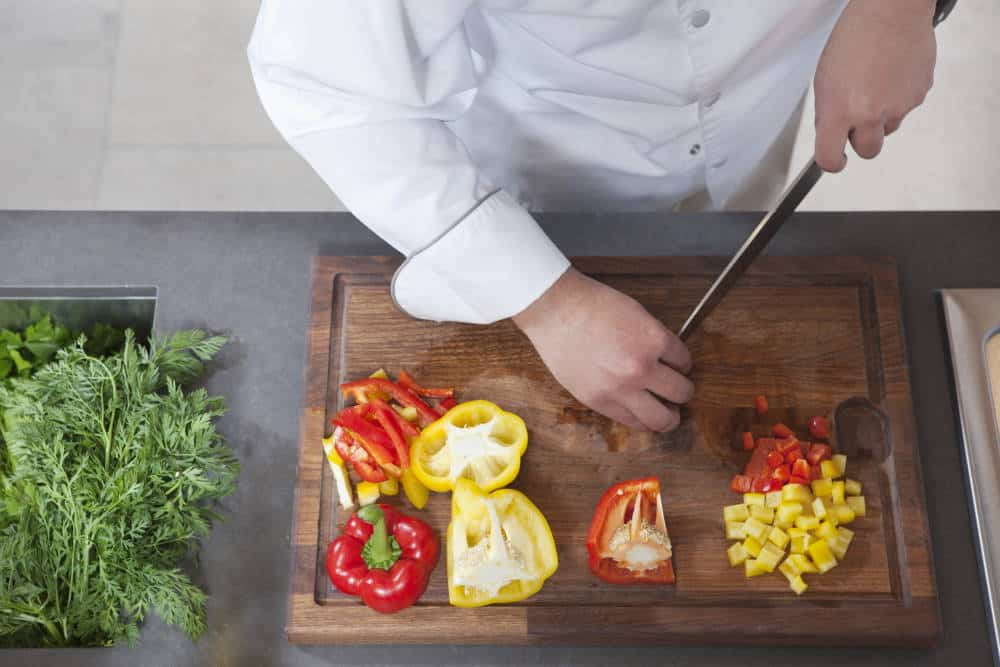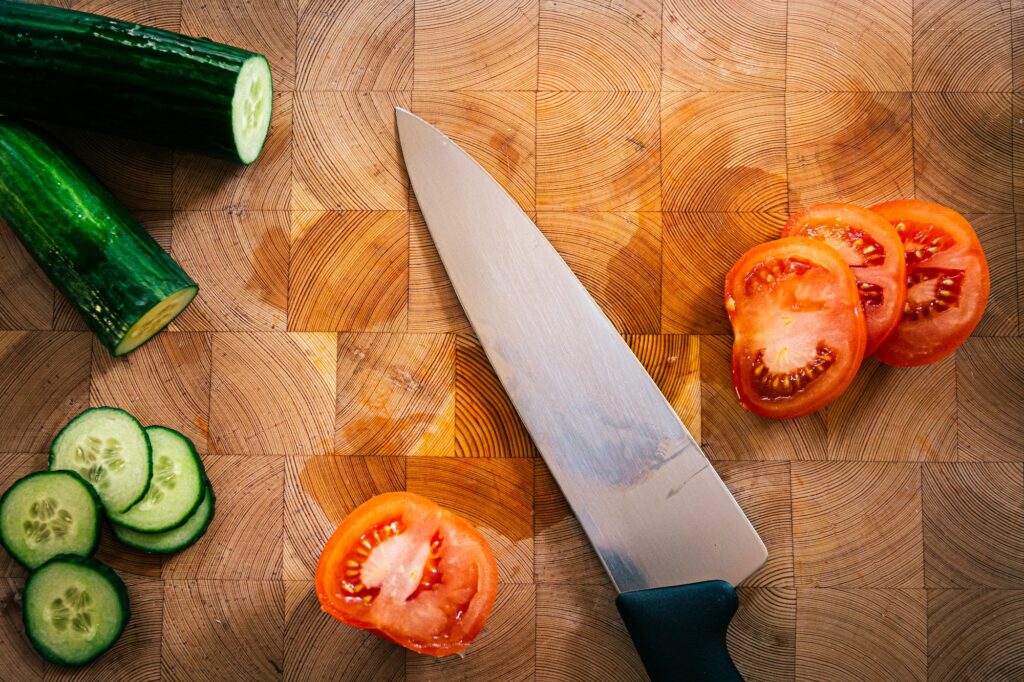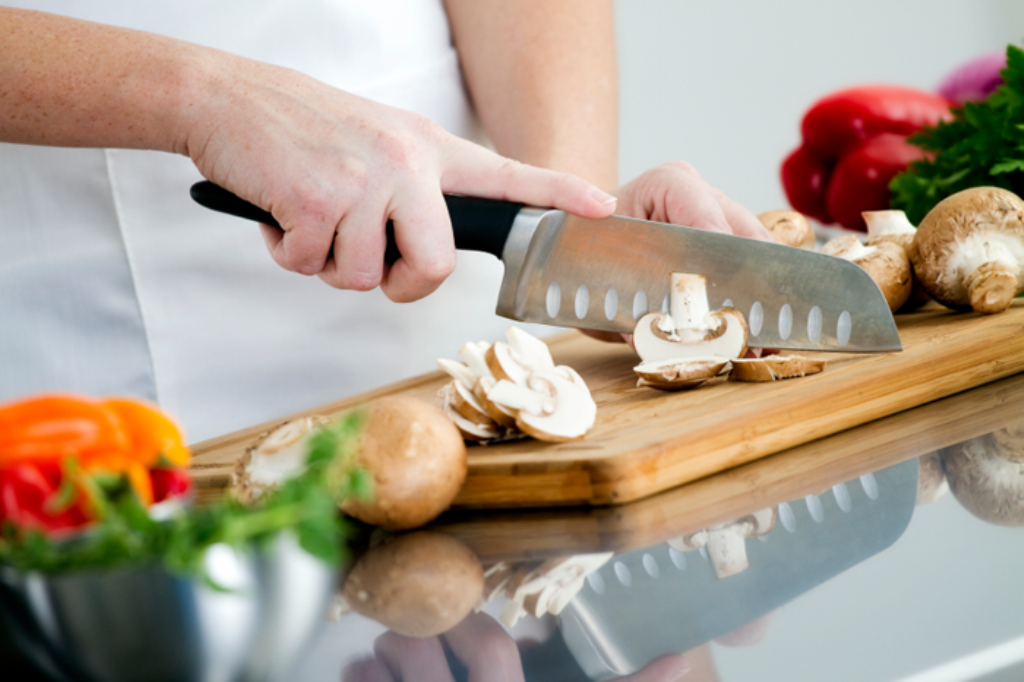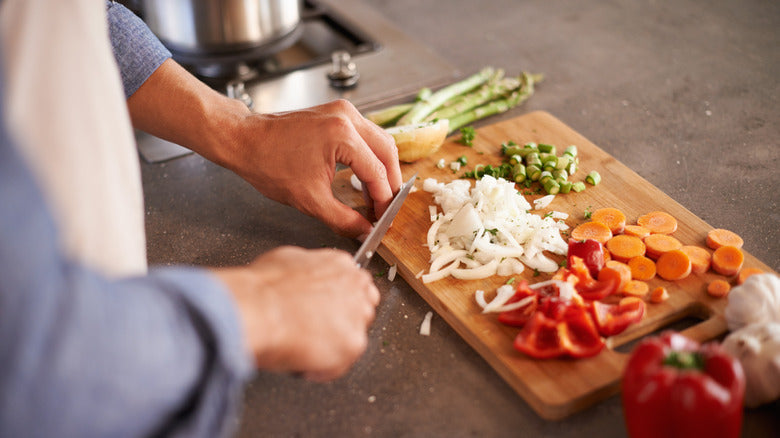
The Tremendous Role of Color-Coded Cutting Boards
In any professional kitchen, every tool serves a specific purpose, and this principle is magnified when it comes to food preparation. Among the array of cutting boards, the blue cutting board stands out for its remarkable significance. But what does using a blue cutting board indicate in a professional kitchen? This is a crucial question for both seasoned chefs and culinary novices working in high-pressure kitchens. The answer lies in its role in food safety, hygiene, and operational efficiency.
Color-coded cutting boards are designed as part of a broader kitchen safety protocol to prevent cross-contamination. The blue cutting board, in particular, is highly regarded in professional kitchens for its exclusive role, which focuses primarily on specific types of food preparation. In this article, we'll explore everything you need to know about blue cutting boards, their functions, and why they are a big deal in maintaining culinary standards.
What Does the Blue Cutting Board Represent?
The blue cutting board serves one essential purpose: it is exclusively used for preparing raw fish and seafood. This life-changing distinction between different cutting boards significantly reduces the risk of cross-contamination between raw foods and ready-to-eat items. Every professional chef is well aware of the importance of avoiding foodborne illnesses, and sticking to color-coded systems is a simple yet terrific way to ensure safety.
Its important to recognize this system as an approved guideline supported by kitchen safety protocols worldwide. A blue cutting board not only ensures youre adhering to proper food handling processes but also proves that your kitchen values high operational standards. Learn how specific cutting board colors are employed for other tasks.
Why is the Blue Cutting Board's Role So Important?
Fish and seafood possess unique characteristics, making specialized tools like the blue cutting board essential for their preparation. For one, their delicate nature requires a clean surface to avoid flavors from other foods seeping in. But beyond taste, the most shocking fact lies in food safety. Fish and seafood are particularly prone to bacterial contamination. Using separate, color-coded boards minimizes the likelihood of harmful bacteria such as Salmonella or Vibrio spreading to other foods.
If youre someone who takes hygiene seriously, youll be delighted to know that this system prevents mishaps, including the transfer of allergens. Chefs and kitchen staff feel tremendous relief knowing their equipment, such as a properly segregated cutting board, helps maintain a safe cooking environment.
To learn more about the importance of material and maintenance for your cutting boards, explore these tips on cleaning cutting boards.
How Does It Align With Kitchen Safety Standards?
Food safety practices are not just guidelines; they are legal requirements in most jurisdictions. Using a blue cutting board for seafood earns your kitchen's operation a level of compliance that customers trust and regulatory bodies approve of. Implementing such techniques reflects a life-changing shift in focus from short-term gains to long-lasting efficiency and professionalism.
Additionally, blue cutting boards are created from resilient materials like HDPE (High-Density Polyethylene), ensuring durability and ease of cleaning. Advanced technology involved in their design adds to their appeal for professional kitchens.
Need organized cleanliness with your cutting board practices? Check out why cutting board colors matter.
Life-Changing Tips on Maintaining Your Blue Cutting Board
Once youve invested in a blue cutting board, ensuring its longevity and cleanliness is crucial. Here are some valuable tips:
- Clean the board immediately after use with hot, soapy water to remove any fish residue.
- Use a food-safe sanitizer to kill bacteria effectively, and ensure thorough rinsing.
- Avoid cross-contact by storing the cutting board separately from others.
- Replace the board once it shows heavy knife scarring to prevent bacteria accumulation.
If you want to go deeper into cutting board maintenance, read this guide: How to clean and sanitize cutting boards.
How Does It Impact Kitchen Pros Like You?
Kitchen professionals thrive on efficiency and consistency. The color-coded system makes it easier for staff to understand their tasks and eliminates guesswork. The visible reminder of a blue board means everyone is on the same page regarding seafood preparation.
This system also reflects a professional approach, saving kitchens from financial penalties or negative publicity from health inspection failures. Plus, it provides you with the confidence to focus on culinary creativity rather than worrying about sanitation issues.
Frequently Asked Questions
1. Can I use a blue cutting board for other foods?
No, the blue cutting board is exclusively intended for fish and seafood to prevent cross-contamination.
2. How often should I replace a blue cutting board?
Replace your blue cutting board when it shows deep knife cuts or scarring, which can harbor bacteria.
3. What happens if I dont follow the color-coded cutting board system?
Neglecting the system can lead to cross-contamination, foodborne illnesses, and potential health code violations.
Explore how proper board placement, like using a wet towel for cutting boards, can also boost safety in your kitchen.

Final Thoughts - Tremendous Importance of the Blue Cutting Board
Understanding what does using a blue cutting board indicate in a professional kitchen highlights the delicate balance between functionality and safety. Its one small element in a vastly complex culinary environment, yet its impact is far-reaching, shaping operations and ensuring quality. Chefs, make sure to integrate the use of blue cutting boards into your workflow it's the big, unmissable change your kitchen needs.
This article contains affiliate links. We may earn a commission at no extra cost to you.






Leave a comment
This site is protected by hCaptcha and the hCaptcha Privacy Policy and Terms of Service apply.